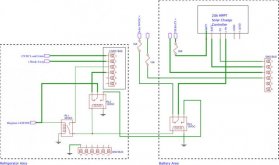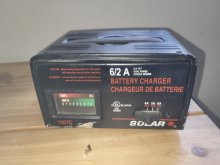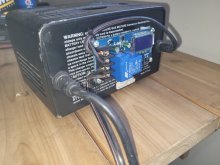sunrise
New Member
- Joined
- Jul 16, 2020
- Messages
- 206
I need a charger that can regulate input current to be under 20A. that's the fuse size in my TV.
I just found this cheap boost/step up converter:

 www.aliexpress.com
www.aliexpress.com
I also plan to add a relay so I the charging can be turned off when the car is not running:
it will be triggered by the running light wire (12v)
I should be able to get a 15-20A dc dc charger with adjustable output voltage (plan to set it to 14v) and input regulation (plan to set to 16a)
Is this plan flawed?
Compare to Victron smart dcdc charger, I will lose 2 things with this
1. bluetooth and mobile app. while I love the app for solar charger, this app is useless for dcdc charger, when it's doing its work, I will be sitting in TV driving. plus I can always use BMS bluetooth to watch charging current (need to consider loads of course)
2. charging profile - switch from bulk to float (14.6 to 13.6). - right now I am not even close to worrying about this, I am fighting fuses being blown by charger draw > 20a current. Even this was working perfectly for charging while driving (3-hour or so), I am not worried the converter would damage the battery as I can adjust the charging voltage to below 14.6, for example, 14v.
If this works, then I'd have a super cheap dc/dc charger that can cruise under the red line of TV 20A fuse, right now I am only getting 5-6A from the Victron.
I have so after spent quite sometime with Victron 12/12-18 DC-DC smart charger, and unsatisfactory results(I need to manually set charging voltage based on battery SOC, or I end up with blown fuse), I have decided to look for alternative solutions.
The problem was that the 18A rating really means 'the charger will be able to provide at least 18A current when conditions are met' and this doesn't mean the charger will regulate the input current to 18A. In fact the charger frequently pull 25A and blown fuse several times during my tests.
Thanks!
I just found this cheap boost/step up converter:

3.06US $ 50% OFF|Dc Dc Boost Converter Constant Module Current Mobile Power Supply 250w 10a Led Driver Module Non-isolated Step Up Module - Integrated Circuits - AliExpress
Smarter Shopping, Better Living! Aliexpress.com
I also plan to add a relay so I the charging can be turned off when the car is not running:
it will be triggered by the running light wire (12v)
I should be able to get a 15-20A dc dc charger with adjustable output voltage (plan to set it to 14v) and input regulation (plan to set to 16a)
Is this plan flawed?
Compare to Victron smart dcdc charger, I will lose 2 things with this
1. bluetooth and mobile app. while I love the app for solar charger, this app is useless for dcdc charger, when it's doing its work, I will be sitting in TV driving. plus I can always use BMS bluetooth to watch charging current (need to consider loads of course)
2. charging profile - switch from bulk to float (14.6 to 13.6). - right now I am not even close to worrying about this, I am fighting fuses being blown by charger draw > 20a current. Even this was working perfectly for charging while driving (3-hour or so), I am not worried the converter would damage the battery as I can adjust the charging voltage to below 14.6, for example, 14v.
If this works, then I'd have a super cheap dc/dc charger that can cruise under the red line of TV 20A fuse, right now I am only getting 5-6A from the Victron.
I have so after spent quite sometime with Victron 12/12-18 DC-DC smart charger, and unsatisfactory results(I need to manually set charging voltage based on battery SOC, or I end up with blown fuse), I have decided to look for alternative solutions.
The problem was that the 18A rating really means 'the charger will be able to provide at least 18A current when conditions are met' and this doesn't mean the charger will regulate the input current to 18A. In fact the charger frequently pull 25A and blown fuse several times during my tests.
Thanks!
Last edited:










